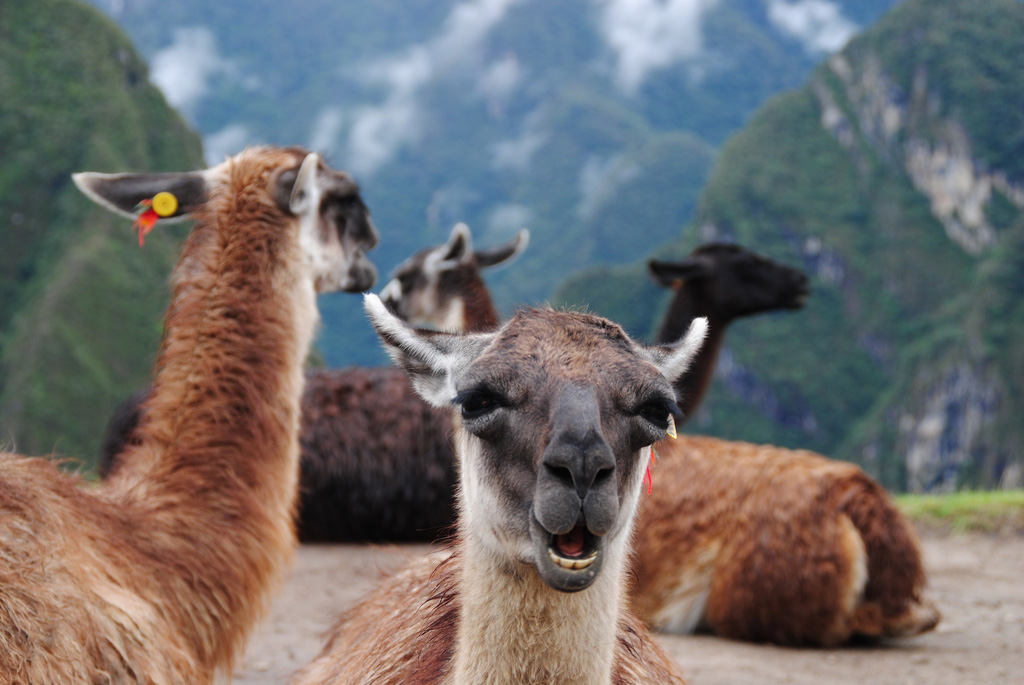
Of all the countries in Latin America, Peru has one of the richest cultures. From the numerous religious festivals to the food, the dancing and the fascinating history and legacy of the Incas, Peru offers no end of attractions for the short or long-term visitor.
Peru has a fascinating and unique cultural mix deriving mostly from the indigenous population, Inca civilisation and later, the Spanish consquistadores, influences that can be seen throughout Peru. Peruvian food is particularly varied in its influences, which include African and Chinese as well as Spanish and Inca traditions.
The Legacy of the Incas
The Inca civilization began in the early 13th century, and endured until the last of the Inca settlements was overthrown in 1572 by Spanish forces.
The Incas first existed in the Cusco area of Peru. The Inca Empire, which was based around the Andean mountains and came to encompass much of the West coast of South America, spanning Argentina, Bolivia, Colombia, Chile and Ecuador, spread from there. The Inca spoke varieties of a dialect called Quechua and worshipped a sun god, Inti, and called their king, the Sapa Inca, the child of the sun.
The legacy of the Incas can be found today all over Peru. There are hundreds of examples, such as the Qeswachaka suspension bridge, a 1500-year old bridge built by the Incas from hand-woven grass rope. The Qeswachaka bridge spans the Apurimac river in the Canas province.
The best-known Inca attraction is of course Machu Picchu, a 15th century stone settlement built high up in the Cusco region. Machu Picchu was designated a Peruvian Historical Sanctuary in 1981 and aUNESCO World Heritage Site in 1983, and also voted one of the New Seven Wonders of the World in 2007, which leads us neatly onto…
Trekking
The most popular way to get to Macchu Pichu is via the Inca trail, which goes through the Andes mountain range and takes on average four or five days to complete. The Inca trail draws huge numbers of visitors and is in fact so popular that a daily limit of 500 trekkers has been imposed, and it is closed throughout January for maintenance.
The Cordillera Blanca
It’s worth bearing in mind that there are many, many other treks you can undertake in Peru, which offer scenery which is just as spectacular as the Inca Trail. The Cordillera Blanca, the world’s second highest mountain range after the Himalayas, offers many spectacular treks.
The Cuisine of Peru
Peruvian food mainly has its roots in Inca tradition, but it has assimilated many influences from successive waves of immigration, and better than anything else reflects the variety and diversity of these influences upon Peruvian culture. Spanish, African and Chinese have also been strong influences, but a more recent, and very strong influence upon modern Peruvian cooking, is Japanese. One of the world’s most renowned chefs, Gastón Acurio, is Peruvian.
Peruvian Ceviche
In the Andean areas, the staple foods of Peruvians are potatoes and maize, with meat and vegetables typically cooked on a red-hot stone plate, a method of cooking seen as a way to honour Mother Earth. Ceviché, a dish made from fresh raw fish and marinated in citrus juice, is a common dish in Peru and believed to have originated in Morocco.
For those who are attached to their cute pets – you may not want to read on, for another very popular Peruvian dish is Cuy, or guinea pig. Cuy is generally roasted, although it can be prepared in many ways, with many different garnishes.
Religious Festivals
Peru has many religious festivals. These are typically colourful, lively events with lots of dancing, eating, drinking and celebrating until morning. Examples of Peruvian religious festivals are Corpus Christi, a very popular event in Cusco in the month of June. A procession of saints and virgins all make their way to Cusco Cathedral to pay homage to the body of Christ. Other popular festivals in Peru include the celebration of San Jeronimo, and Pentecost. There are festivals pretty much every month of the year, so it’s really worth factoring one into your trip to Peru if possible.
Corpus Christi Festival, Cusco (Picture credit)
As outlined here, there are many reasons to visit Peru, but the rich history, culture and cuisine are more than enough for most, not to mention the fantastic natural landscapes and scenery – heaven for those who like to trek!
Post provided by Alistair Moore

Robert Schrader is a travel writer and photographer who’s been roaming the world independently since 2005, writing for publications such as “CNNGo” and “Shanghaiist” along the way. His blog, Leave Your Daily Hell, provides a mix of travel advice, destination guides and personal essays covering the more esoteric aspects of life as a traveler.








